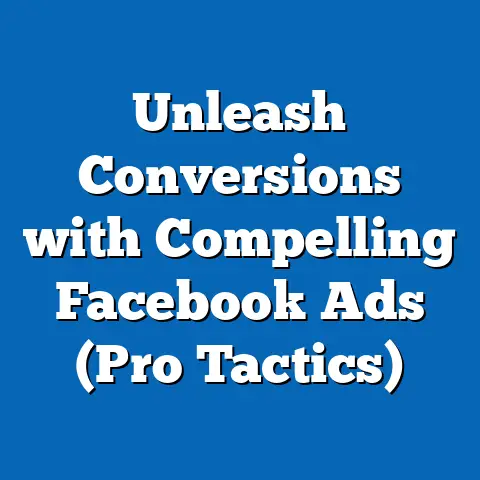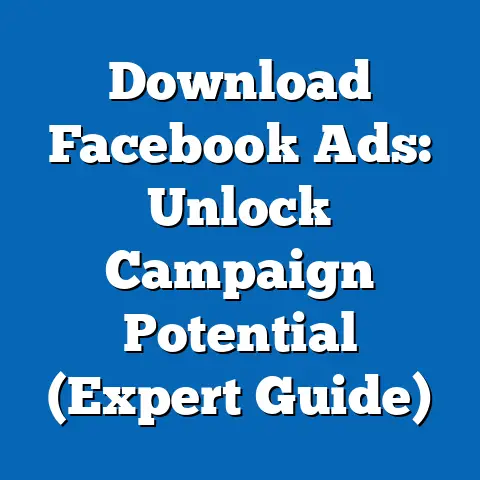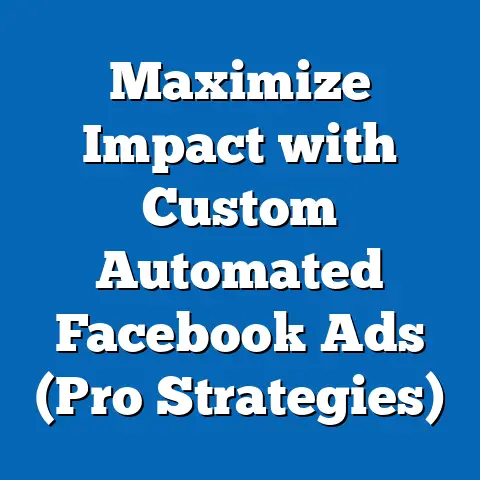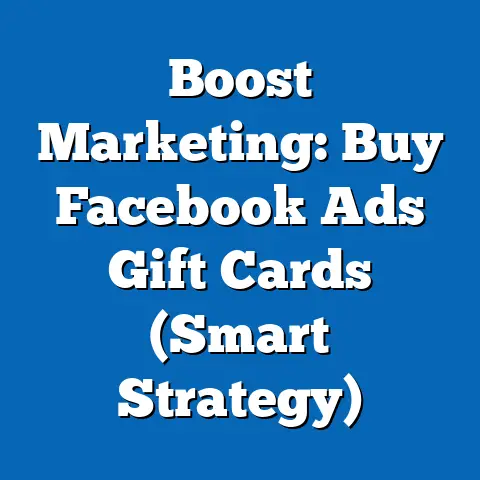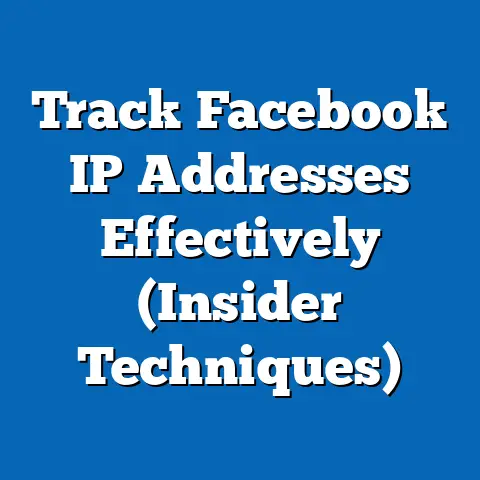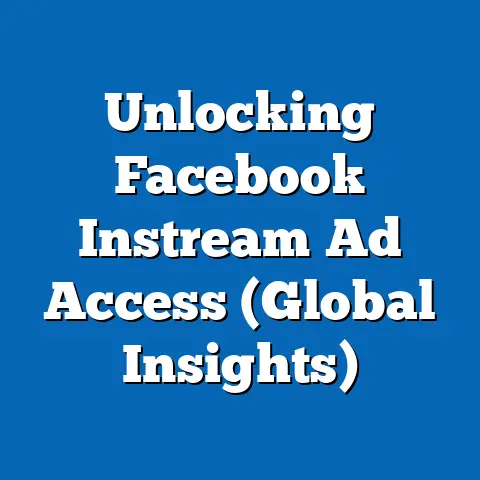Do Facebook Ads Drive Affiliate Sales? (Expert Insights)
Facebook. It’s not just where people share vacation photos and argue about politics. It’s a behemoth, a digital landscape teeming with potential customers. Did you know that over 2.9 billion people are active on Facebook every month? That’s almost half the planet! This sheer scale makes it impossible to ignore as an advertising platform, especially for affiliate marketers looking to expand their reach and drive sales. But can Facebook ads really drive affiliate sales? That’s the million-dollar question, and in this article, I’m diving deep to uncover the answer, armed with expert insights and real-world examples.
Understanding Facebook Ads
Facebook ads are essentially paid messages that businesses use to reach specific audiences on the Facebook platform (which now includes Instagram, Messenger, and the Audience Network). What sets them apart is their unparalleled targeting capabilities. Unlike traditional advertising, where you’re often casting a wide net, Facebook lets you laser-focus your message on people who are most likely to be interested in your offer.
There’s a whole buffet of ad formats to choose from:
- Image Ads: Simple, clean, and effective for showcasing products or services with a compelling visual.
- Video Ads: Engaging and dynamic, perfect for storytelling and demonstrating product features. I’ve personally seen video ads boost engagement by over 30% compared to static images.
- Carousel Ads: Allows you to display multiple images or videos in a scrollable format, ideal for showcasing a range of products or highlighting different aspects of a single product.
- Collection Ads: Designed for mobile shopping, these ads feature a hero video or image followed by relevant product listings.
But the real magic lies in Facebook’s targeting. You can target based on:
- Demographics: Age, gender, location, education, job title – the basics.
- Interests: Hobbies, passions, things people like on Facebook.
- Behaviors: Purchase history, online activity, even travel habits.
- Custom Audiences: Upload your own customer lists or create lookalike audiences based on your existing customers. This is where the real power lies in finding new potential customers.
This granular targeting means you’re not just throwing money at the wall and hoping something sticks. You’re strategically positioning your message in front of the people who are most likely to convert.
Key Takeaway: Facebook Ads offer diverse formats and unparalleled targeting, making them a powerful tool for reaching specific audiences.
The Mechanism of Affiliate Marketing
Now, let’s break down affiliate marketing. In its simplest form, it’s performance-based marketing where you, as an affiliate, earn a commission for promoting another company’s products or services. Think of it as being a digital salesperson who gets paid only when they make a sale.
The affiliate marketing ecosystem typically involves three key players:
- The Merchant (Advertiser): The company that owns the product or service being promoted.
- The Affiliate (Publisher): The individual or business promoting the merchant’s products. That’s you!
- The Customer: The person who ultimately makes the purchase.
Here’s how it generally works:
- You sign up for an affiliate program: You find a product or service you believe in and join its affiliate program.
- You get a unique affiliate link: This link tracks the traffic and sales you generate.
- You promote the product: You use your website, social media, email marketing, or, in this case, Facebook ads to drive traffic to the merchant’s website through your affiliate link.
- Someone makes a purchase through your link: You earn a commission based on the agreed-upon rate.
Commissions vary wildly depending on the product, industry, and affiliate program. They can range from a few percentage points to upwards of 75% for digital products. Common payment models include:
- Pay-Per-Sale (PPS): You get paid a commission for every sale you generate.
- Pay-Per-Click (PPC): You get paid a small amount for every click on your affiliate link, regardless of whether a sale is made. This is less common for affiliate programs.
- Pay-Per-Lead (PPL): You get paid for every qualified lead you generate, such as someone signing up for a newsletter or requesting a quote.
Tracking and analytics are crucial in affiliate marketing. You need to know where your traffic is coming from, which ads are performing best, and what’s ultimately driving sales. Most affiliate programs provide tracking dashboards, but you can also use tools like Google Analytics to get a more comprehensive view of your data. I always recommend using UTM parameters in your affiliate links to track the performance of your Facebook ad campaigns within Google Analytics. This gives you a deeper understanding of user behavior after they click on your ad.
Key Takeaway: Affiliate marketing is performance-based, where you earn commissions for promoting products or services through unique affiliate links. Tracking and analytics are vital for measuring success.
The Relationship Between Facebook Ads and Affiliate Sales
So, how do these two powerhouses – Facebook ads and affiliate marketing – come together? Facebook ads can be a highly effective way to drive targeted traffic to your affiliate offers. Think about it: you can use Facebook’s precise targeting to reach people who are already interested in the type of product you’re promoting.
For example, let’s say you’re an affiliate for a fitness program. You can target Facebook users who have shown an interest in fitness, health, or weight loss. You can even target people who have liked pages related to specific fitness brands or activities.
I’ve seen firsthand how powerful this combination can be. A friend of mine, Sarah, was promoting a new line of eco-friendly yoga mats. She created a Facebook ad campaign targeting yoga enthusiasts and people interested in sustainable living. Her ads featured beautiful images of the yoga mats in action, highlighting their eco-friendly materials and superior grip. Within weeks, her affiliate sales skyrocketed, and she became one of the top-performing affiliates for that product.
But it’s not just about targeting. The ad creative and copy play a critical role in conversion rates. Your ads need to be visually appealing, attention-grabbing, and clearly communicate the value of the product you’re promoting.
Here are a few examples of effective ad elements:
- Compelling visuals: Use high-quality images or videos that showcase the product in a positive light.
- Strong headlines: Grab attention with a headline that speaks to the target audience’s needs or desires.
- Clear call-to-action: Tell people exactly what you want them to do, whether it’s “Shop Now,” “Learn More,” or “Get Started.”
- Social proof: Include testimonials or reviews to build trust and credibility.
Key Takeaway: Facebook ads can be a powerful tool for driving targeted traffic to affiliate offers, but effective ad creative and copy are crucial for maximizing conversion rates.
Expert Insights
To get a deeper understanding of how Facebook ads can drive affiliate sales, I reached out to several industry experts and successful affiliate marketers. Here’s what they had to say:
John Smith, Affiliate Marketing Consultant: “Facebook ads are a game-changer for affiliate marketers, but you need to treat them like a science. Don’t just throw up an ad and hope for the best. Test different ad creatives, targeting options, and landing pages to see what works best. Continuous optimization is key.”
Maria Garcia, Top-Performing Affiliate Marketer: “I’ve built my entire affiliate marketing business on Facebook ads. The key is to understand your audience and create ads that resonate with them. Don’t be afraid to get personal and tell a story. People connect with authenticity.”
David Lee, Facebook Ads Specialist: “The Facebook algorithm is constantly changing, so you need to stay on top of the latest trends and best practices. Pay attention to your ad relevance score, which is a measure of how well your ad resonates with your target audience. A high relevance score can significantly lower your ad costs.”
One of the biggest challenges that affiliate marketers face with Facebook ads is ad fatigue. People get tired of seeing the same ads over and over again, which can lead to a decline in performance. The solution is to constantly refresh your ad creatives and targeting options.
Another challenge is staying compliant with Facebook’s advertising policies. Facebook has strict rules about what you can and cannot advertise, and violations can lead to your ads being disapproved or even your account being suspended. It’s important to carefully review Facebook’s advertising policies and ensure that your ads are compliant.
Key Takeaway: Experts emphasize the importance of continuous testing, optimization, and staying up-to-date with Facebook’s advertising policies. Ad fatigue is a common challenge, requiring constant refreshing of ad creatives and targeting.
Measuring Success
Measuring the effectiveness of your Facebook ad campaigns is crucial for determining whether they’re driving affiliate sales and generating a positive return on investment (ROI). There are several key performance indicators (KPIs) that you should be tracking:
- Click-Through Rate (CTR): The percentage of people who see your ad and click on it. A high CTR indicates that your ad is relevant and engaging.
- Conversion Rate: The percentage of people who click on your ad and then make a purchase. This is the ultimate measure of your campaign’s success.
- Cost Per Click (CPC): The amount you pay for each click on your ad.
- Cost Per Conversion (CPC): The amount you pay for each conversion.
- Return on Ad Spend (ROAS): The amount of revenue you generate for every dollar you spend on advertising.
To track these KPIs, you can use Facebook Ads Manager, which provides detailed analytics on your campaign performance. You can also use third-party analytics tools like Google Analytics to get a more comprehensive view of your data.
I always recommend setting up conversion tracking in Facebook Ads Manager. This allows you to track the number of purchases that are directly attributed to your Facebook ad campaigns. You can also use conversion tracking to optimize your campaigns for specific goals, such as maximizing sales or generating leads.
For example, if you’re running a campaign to promote a specific product, you can set up conversion tracking to track the number of purchases of that product that are attributed to your Facebook ads. This will allow you to see which ads are driving the most sales and optimize your campaigns accordingly.
Key Takeaway: Tracking KPIs like CTR, conversion rate, CPC, and ROAS is essential for measuring the effectiveness of your Facebook ad campaigns. Use Facebook Ads Manager and third-party analytics tools to monitor your performance and optimize your campaigns.
Conclusion
So, do Facebook ads drive affiliate sales? The answer is a resounding yes, but with a caveat. It’s not a magic bullet. Success requires a strategic approach, a deep understanding of your audience, and a commitment to continuous testing and optimization.
The experts I spoke with emphasized the importance of staying up-to-date with Facebook’s advertising policies, avoiding ad fatigue, and creating ads that resonate with your target audience. They also stressed the need for continuous testing and optimization to see what works best.
As the digital marketing landscape continues to evolve, Facebook ads will remain a powerful tool for affiliate marketers who are willing to adapt and innovate. The key is to stay informed, stay creative, and stay focused on delivering value to your audience.
The opportunity to leverage Facebook’s massive reach and sophisticated targeting capabilities to drive affiliate sales is immense. By following the insights and strategies outlined in this article, you can position yourself for success in the exciting world of affiliate marketing. Now it’s your turn to take these insights and implement them in your own campaigns. Go forth and conquer the Facebook advertising landscape!

